SPDIF, also written as S/PDIF, stands for Sony/Phillips Digital Interface and is an interface to transmit digital audio. In this tutorial, we will explain everything you need to know about this interface and the SPDIF Connection, including when and how to use it.
Digital audio means that the audio signal is transmitted encoded in a series of 0s and 1s instead of being transmitted in analog format. This makes audio have higher fidelity, because no noise will be added to the audio signal. Therefore, it is always better to transmit audio in digital format.
Currently, there are two consumer-level interfaces to transmit audio in digital format: SPDIF and HDMI (High-Definition Multimedia Interface). SPDIF transmits only audio, but HMDI also carries digital video signal.
If HDMI is a more “complete” interface, why should you use the SPDIF Connection? It’s because not all audio/video equipment has an HDMI output available. For example, a professional-grade CD player or a MiniDisc deck will have an SPDIF output available, but not an HDMI, since this equipment doesn’t produce video, only audio.
Also, in certain situations (which we will talk about in the next page), you will need to carry video using the HDMI interface but audio using an SPDIF connection. Also, SPDIF cables and connectors are very thin, while HDMI cables and connectors are bulky, since they have more wires inside.
Let’s talk about when the SPDIF connection is to be used.
[nextpage title=”When to Use SPDIF”]
As stated, you must use a digital audio connection whenever possible, as it will provide the best audio quality. The question is when you should use HDMI and when you should use SPDIF.
As we mentioned before, if you are connecting two audio equipments, most likely you will have to use SPDIF, as probably the audio source won’t have an HDMI connector. For example, when connecting a professional-grade CD player or a MiniDisc deck to an amplifier (“receiver”) or a professional-grade mixer that supports SPDIF. If one or both equipment(s) don’t have an SPDIF connector, then digital audio connection won’t be possible, and you will end up having to connect them using a regular analog connection, via a pair of RCA cables.
Also, as we will discuss later, there are two kinds of consumer-level SPDIF connectors: coaxial (RCA) and optical (Toslink). Obviously, the two equipments you are trying to connect must use the same connector type. If you have a professional CD player that only has a coaxial SPDIF output, and your audio receiver has only an optical SPDIF input, you won’t be able to connect the two using SPDIF.
[amazon box=”B0184PIVDU” template=”table”]The same applies if your equipment has both HDMI and SPDIF outputs, but you want only to connect audio, not video. For example, you want to connect a PC to your home theater setup to listen to music or play games, but you don’t want the image to be sent to the TV. In this case, you are most likely to use the SPDIF connection.
If you are willing to connect an equipment that also produces video (DVD player, Blu-Ray player, video game console, computer, TV set-top box – a.k.a. cable/satellite TV decoder, etc.), then you will have to study the situation, because you will have a few different options.
Let’s assume that you are trying to connect equipment to your home theater setup, which is the most common situation.
In your home theater setup, you have two main components, the TV set and the audio receiver (amplifier). For obvious reasons, you want the video signal to go to the TV and the audio signal to go to the audio receiver.
If you only have a TV (i.e., you don’t have a home theater receiver with a bunch of loudspeakers around), your best connection will be the HDMI, if supported by your TV and the equipment you want to connect to your TV, of course. Simply connect one end of an HDMI cable to the device you want to connect to your TV and the other end to an empty HDMI input on the TV. This way you will have both digital audio and video, the best possible scenario. We illustrate this scenario in Figure 1.
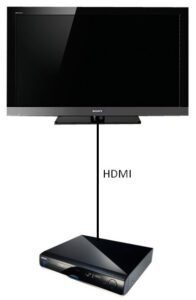
Figure 1: Connecting your audio/video source to a TV set using HDMI
In this case, if you have more than one audio/video source, you will have to connect each one of them to a different HDMI input on the TV. Suppose your TV has three separate HDMI inputs. You will be able to connect your cable/satellite TV to one input, your Blu-Ray player to another input, and your video game console to the third input.
If you want to connect a fourth audio/video source (e.g., a computer) in this case, you will need to remove one of the other devices, as your TV has only three HDMI inputs.
If your audio/video source or TV doesn’t have an HDMI connector, you will need two sets of cable, one to connect the video to the TV, using the best video connection available (see our Video Connectors tutorial for a more detailed discussion), and an SPDIF cable connecting the audio/video source to your audio receiver (or to your TV, if you don’t have an audio receiver). See Figure 2.
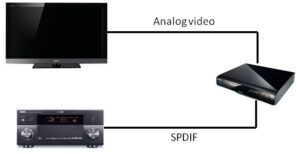
Figure 2: Connecting your audio/video source without using HDMI
[nextpage title=”When to Use SPDIF (Cont’d)”]
Most home theater receivers have an integrated video switcher. This allows you to connect all sources of audio and video you have at home (cable/satellite box, Blu-Ray player, DVD player, video game console, computer, etc.) to the audio receiver, and the audio and video to be changed from one source to another by just pressing one button or turning a knob. So, instead of having all cables being connected to the TV, they are all connected to your home theater receiver, making it necessary to have only one HDMI cable carrying the video from the receiver to the TV.
Some home theater receivers are able to extract the digital audio from the HDMI connectors from all your audio/video sources. So, you only need to use HDMI cables. See Figure 3 to understand this scenario.
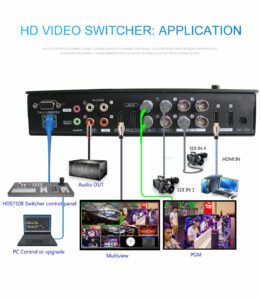
Figure 3: Audio receiver with an integrated video switcher and able to extract digital audio
If your home theater receiver isn’t able to extract audio from the HDMI connectors, then you will be required to use SPDIF cables to carry the digital audio. There are two possible configurations for this scenario. The most common is shown in Figure 4. Instead of having only one cable from each audio/video source, we will now have two: the HDMI cable, carrying the video signal, and the SPDIF cable, carrying the audio signal.
In the case of computers, if you want to connect only audio, but not video, you can use the connection shown in Figure 4 without using the HDMI connection shown.
The second possibility must be used if your audio receiver doesn’t have a video switcher. In this case, all your audio/video sources are connected directly to the TV, and assuming that your TV is able to extract audio from its HDMI inputs and route it to its SPDIF output, you will use this SPDIF output to connect the TV to the audio receiver. Equipments that only generate audio (e.g., CD players, MiniDisc decks, etc.) must be connected directly to the audio receiver. In this case, the selection of which equipment is going to be used will be done on the TV, not on the audio receiver.
There are two kinds of consumer-level SPDIF connections, coaxial and optical. The coaxial connection uses a mono RCA connector, usually painted orange, to make it easier to differentiate it from video connections that use a similar connector. The optical connection uses a square connector called Toslink (Toshiba Link). Some equipment has both connectors; some have only one of them. Let’s see some examples.
In Figure 6, we have the back of a professional-grade CD player (Pioneer CDJ-100S), which has a coaxial SPDIF output. Note how it has a switch for you to enable this output. The other connectors are the analog audio outputs and a jack for an optional remote control.
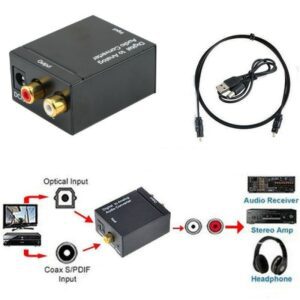
Figure 6: Example of a coaxial SPDIF output
In Figure 7, we see the back of a DVD player, which has both the optical and the coaxial SPDIF outputs.
Figure 7: Example of optical and coaxial SPDIF outputs
In Figure 8, we have the back of a video game console, which has an optical SPDIF output as well as an HDMI output.
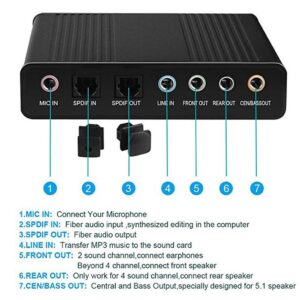
Figure 8: Example of optical SPDIF output
In Figure 9, we have the back of an audio receiver, featuring an optical SPDIF input and a coaxial SPDIF input. See how, on this particular receiver, the optical SPDIF input is labeled “Video 2 In,” and the coaxial SPDIF input is labeled “DVD In.” This is important information because these are the names the equipment uses for these inputs.
The coaxial SPDIF cable is a simple mono RCA cable. See Figure 10. The optical SPDIF cable is a fiber optics. There are two kinds of optical connector. The most common is a square one (see Figure 11), but a 3.5 mm optical connector is also available (see connector on the right-hand side in Figure 12). This 3.5 mm connector has the same size as a 3.5 mm headphone plug and is commonly used on laptop computers. There are also adapters for you to convert the regular square connector into a 3.5 mm one.
[amazon box=”B0184PIVFI,B075MB19LM” template=”table”]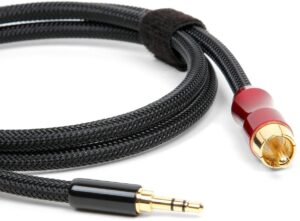
Figure 10: Coaxial SPDIF cable
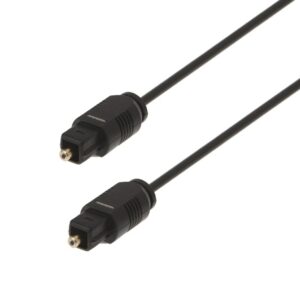
Figure 11: Optical SPDIF cable
The availability of ready-to-use SPDIF connectors will depend on the motherboard or laptop model. Looking at the rear panel of your computer, you can easily see if your computer has optical and/or coaxial SPDIF connectors. The motherboard shown in Figure 13 comes with an optical SPDIF connector, while the motherboard shown in Figure 14 comes with both optical and coaxial SPDIF connectors.
On laptops, the presence of an SPDIF output is more difficult to detect, because it is usually combined with the headphone jack, supporting the 3.5 mm optical connector (see previous page). Therefore, most users think that they don’t have an SPDIF output on their laptops, while this feature may be available. You have to take a look around the headphone jack to see if the word “SPDIF” is written near it, as it is the case with the laptop portrayed in Figure 15. Several laptop models, however, won’t bring any indication that they have an SPDIF output. You will have to check on the product specifications page to see if SPDIF is listed. If it is, then the headphone jack is also an SPDIF output.
There are other tricks to detect the support for SPDIF. You can try using your computer in the dark and playing a song with it to see if you can see a red light coming out of the headphone jack, indicating that there is an SPDIF interface inside. (Don’t look directly at the source of the light; it can damage your eyes.) Another trick is to see the color of the jack. If it is just green, probably the jack doesn’t have SPDIF function, but if it is black, like the jack shown in Figure 15, it probably does. Unfortunately, not all manufacturers follow this scheme.
[nextpage title=”Adding SPDIF Outputs to your Computer”]
Almost all motherboards have the SPDIF interface, even if the motherboard doesn’t come with SPDIF connectors soldered on it. If you want to add SPDIF connectors to your computer, you must look for a header on the motherboard that has the SPDIF output. This header can be found with several different names, such as “JSP1” (see Figure 16), “SPDIF_OUT” (see Figure 17), “SPDIFO,” “SPDIF_O,” “HDMI_SPDIF,” etc. The product manual may help you.
You will need to buy an adapter and install it to the SPDIF header available on your motherboard.
Frequently Asked Questions
Which is better: HDMI or SPDIF?
The biggest difference is that HDMI can pass higher-resolution audio, including the formats found on Blu-ray: Dolby TrueHD and DTS HD Master Audio. In terms of simplicity, HDMI also passes video signals. So if you want just a single cable between two devices, HDMI is your pick. All in all, HDMI is far more capable than any SPDIF connection, so just go with that if you have the possibility of doing so. No doubt, in today’s world, you can easily find TVs and other similar devices with one or even several HDMI connections to boot.
Can you convert SPDIF to optical?
Yes, but you’ll need special connectors to do so. You can find more complex answers to this question by visiting this forum thread.
What is PCM audio?
Pulse-Code Modulation (PCM) and the Dolby Digital technology refer to different types of digital audio recordings. PCM is the conventional method for converting analog audio into digital audio. The PCM audio recorded on DVD is a two-channel digital, stereo audio track. The Dolby Digital technology, which was originally called AC3, was developed specifically for multi-channel applications, including film sound and digital surround sound in the home. Dolby Digital technology uses a 5.1 or six-channel format. The 5 channels include the Stereo left and right front channels, Stereo left and right surround channels, and the center channel.
Final Thoughts
There you have it. That’s about all there is to know about the SPDIF connection. We hope you’ve found the article interesting and that it has answered all of your burning questions. If you want, you can also leave us a comment down below with suggestions, corrections, or other thoughts you might have on the matter.
The people editing these articles are, well, people, so if you spot any mistake, be sure to let us know. And, finally, thank you for reading our article. We welcome you to browse the rest of the website and see what else you might want to read next, as we have numerous topics covered regarding hardware and even some software.

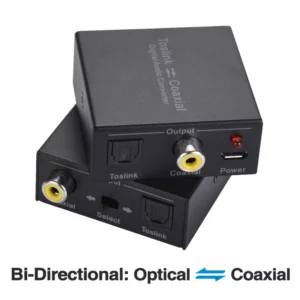
Leave a Reply